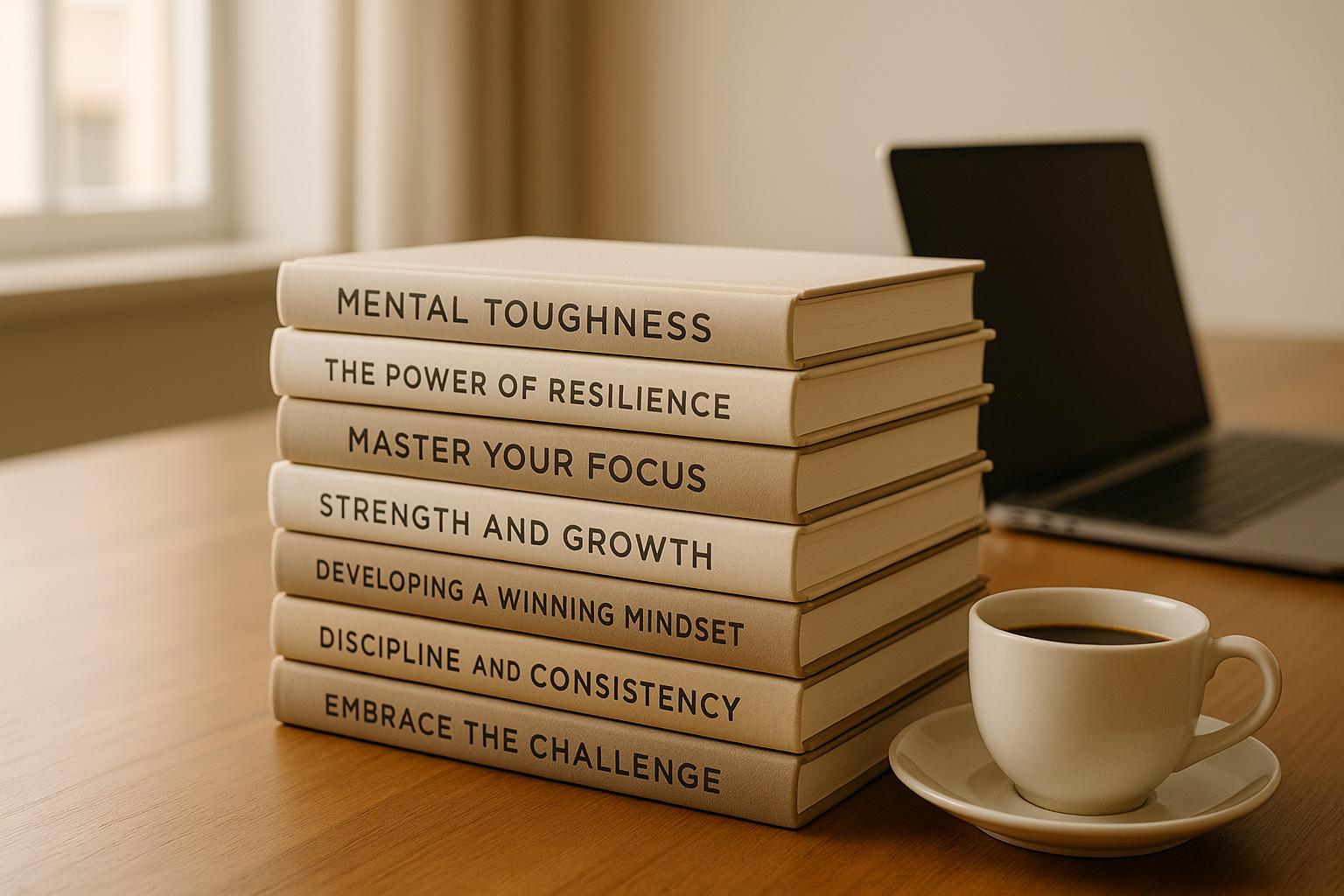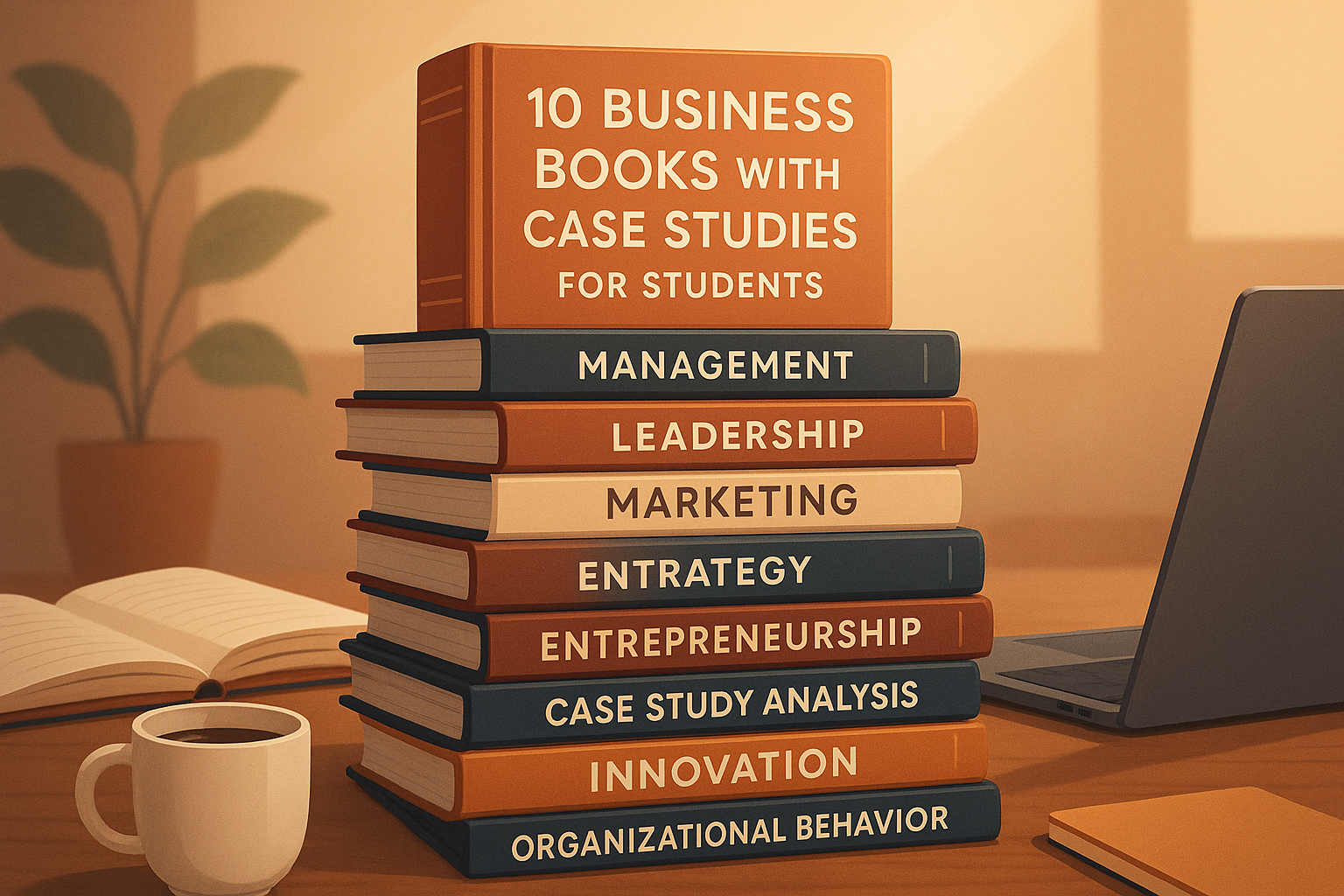Want to boost your productivity and ace your studies? These 7 books are packed with proven strategies to help you manage time, stay focused, and reduce stress. Here’s a quick overview:
- Atomic Habits by James Clear: Learn how small, consistent changes can build lasting study habits.
- Deep Work by Cal Newport: Master the art of distraction-free, focused work.
- The 7 Habits of Highly Effective People by Stephen R. Covey: Balance priorities and develop long-term productivity skills.
- Make It Stick by Peter C. Brown, Henry L. Roediger III, and Mark A. McDaniel: Discover research-backed techniques for better learning and retention.
- Getting Things Done by David Allen: Organize tasks and clear mental clutter with a simple system.
- The Productivity Project by Chris Bailey: Manage your energy and find what productivity methods work best for you.
- Essentialism by Greg McKeown: Focus on what truly matters by cutting out unnecessary tasks.
Quick Comparison Table
| Book Title | Focus Area | Key Benefit |
|---|---|---|
| Atomic Habits | Habit Building | Small changes for lasting habits |
| Deep Work | Focus & Concentration | Techniques to minimize distractions |
| The 7 Habits of Highly Effective People | Personal Growth | Framework for balancing priorities |
| Make It Stick | Learning & Retention | Study smarter with proven strategies |
| Getting Things Done | Task Management | Clear systems to reduce overwhelm |
| The Productivity Project | Energy Management | Experiment with personalized approaches |
| Essentialism | Prioritization | Do less, but focus on what matters most |
Start with the book that addresses your biggest challenge - whether that’s procrastination, focus, or feeling overwhelmed. Each offers actionable tips to help you create a system that works for your academic goals.
I Read 107 Productivity Books. Here's What Actually Works.
1. Atomic Habits by James Clear
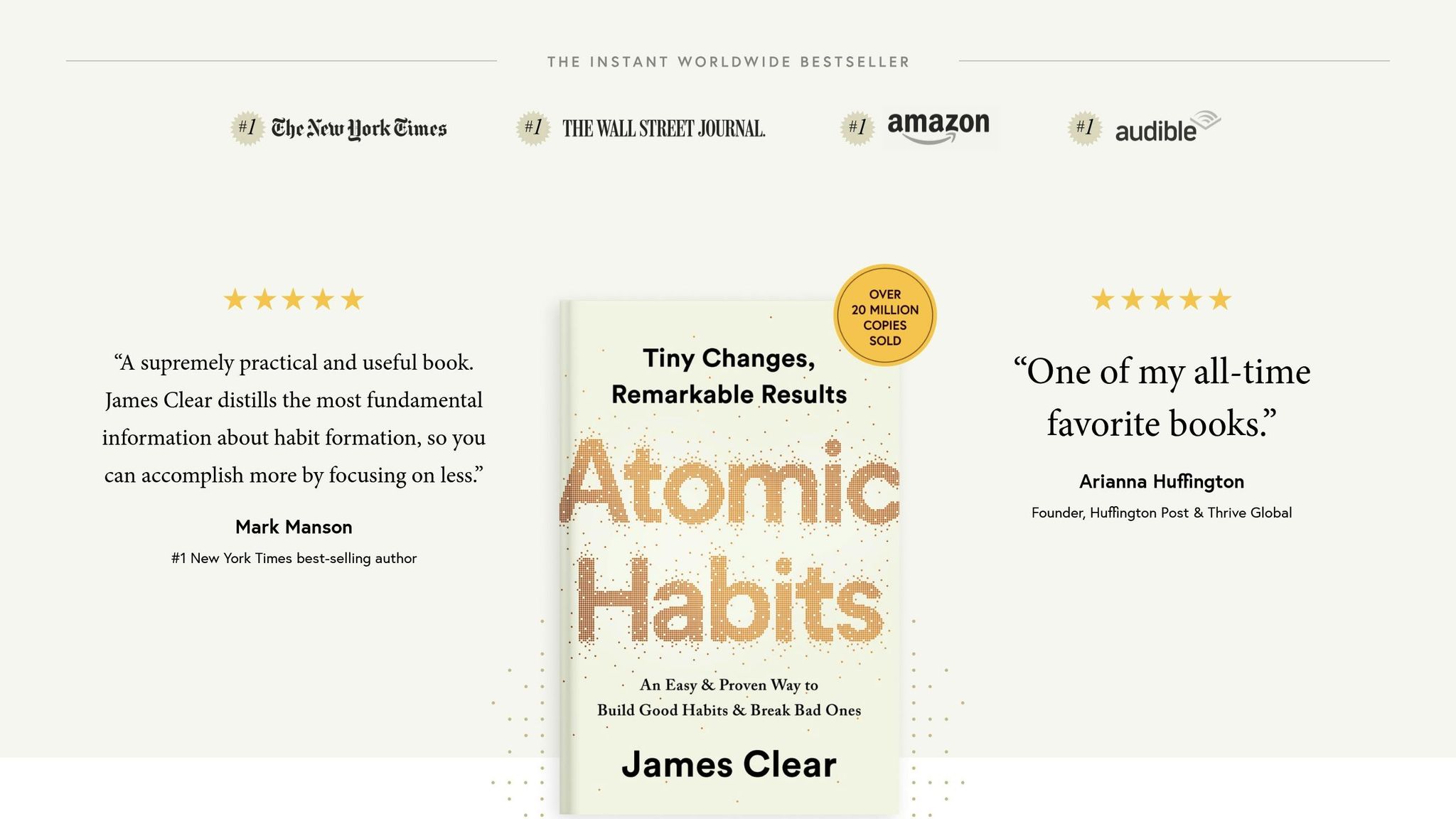
James Clear's Atomic Habits offers a practical approach to building consistent study habits and tackling procrastination. The book explains how small, incremental changes can lead to long-term success.
At its core are the "Four Laws of Behavior Change", which are especially helpful for students:
- Make it Obvious: Set up a dedicated study area with organized materials to create clear visual cues for study time.
- Make it Attractive: Combine studying with something you enjoy, like listening to soft music or rewarding yourself afterward.
- Make it Easy: Break assignments into smaller, quick tasks that take only a few minutes to start.
- Make it Satisfying: Track progress and celebrate even small achievements to stay motivated.
What sets Atomic Habits apart is its focus on identity-based habits. Instead of saying, "I need to study more", shift your mindset to "I am becoming a focused learner." This mental change can help reinforce positive habits that stick.
The book also highlights habit stacking, where you link a new habit to an existing one. For example, you could review notes right after breakfast or start homework right after finishing a class. Setting up a distraction-free study space and tracking your daily progress can help you stay on course.
To put these ideas into action, try structuring your study sessions with techniques like working for 25 minutes followed by a 5-minute break (Pomodoro Technique). Use a "just start" rule for tackling assignments - commit to working for at least two minutes, and you'll often find it easier to keep going. By incorporating these methods, you can create a smoother, more productive study routine.
2. Deep Work by Cal Newport
Cal Newport's Deep Work introduces the idea of focused, uninterrupted work as a key to academic success. In today’s world, digital distractions make it harder for students to stay on track, but the book offers practical strategies to tackle this challenge head-on.
The core concept revolves around dedicating structured, distraction-free time to what Newport calls "deep work" - a state of intense focus that boosts productivity and learning.
Here’s how you can put these principles into action:
- Plan Focused Study Sessions: Set aside specific times when your energy levels are highest to tackle demanding tasks.
- Eliminate Distractions:
- Turn off phone notifications.
- Use apps or tools to block distracting websites.
- Find a quiet place to study.
- Close unnecessary browser tabs.
- Start with a Purpose: Each session should begin with a clear goal and a set time limit to keep you on track.
"Deep work is the ability to focus without distraction on a cognitively demanding task. It allows you to quickly master complicated information and produce better results in less time."
3. The 7 Habits of Highly Effective People by Stephen R. Covey
Stephen R. Covey's classic, The 7 Habits of Highly Effective People, provides a practical framework for balancing priorities and achieving productivity. It’s especially helpful for students juggling coursework, extracurriculars, and personal responsibilities. The habits guide readers from self-management to effective teamwork:
-
Be Proactive
Focus on what you can control instead of external obstacles. For instance, if a course feels overwhelming, consider forming a study group or attending office hours for extra help. -
Begin with the End in Mind
Set clear goals - whether it’s achieving a specific GPA, gaining new skills, or expanding your network. Defining your objectives makes it easier to stay on track. -
Put First Things First
Prioritize tasks that matter most. This could include regular study sessions, preparing assignments, staying active, or taking care of your mental health. -
Think Win-Win
Collaboration beats competition in group projects, study partnerships, and peer interactions. Aim for solutions that benefit everyone involved. -
Seek First to Understand, Then to Be Understood
This habit is key for improving how you learn and communicate. It applies to:- Taking better notes in lectures
- Asking thoughtful questions
- Building rapport with professors
- Collaborating effectively in study groups
-
Synergize
Appreciate different perspectives and skills when working with others. In group projects, divide tasks based on each member’s strengths instead of trying to handle everything yourself. -
Sharpen the Saw
Maintain balance in all areas of life:- Physical: Exercise, eat well, and get enough sleep
- Mental: Read, learn new skills, and stay curious
- Social: Build relationships and manage stress
- Spiritual: Reflect, meditate, or find activities that give you purpose
"The 7 Habits of Highly Effective People offers powerful lessons in personal change and leadership"
This structured approach not only supports academic success but also prepares students for challenges beyond their college years.
4. Make It Stick: The Science of Successful Learning by Peter C. Brown, Henry L. Roediger III, and Mark A. McDaniel
Make It Stick challenges traditional study habits like highlighting, re-reading, and cramming. Instead, it offers research-backed strategies to improve how we learn and retain information. Here’s a breakdown of the key principles for better learning:
-
Active Retrieval
Instead of passively reviewing material, focus on recalling it. For example, close your book and try explaining key ideas in your own words. This process strengthens your memory and helps cement the information. -
Spaced Practice
Ditch the all-night study sessions. Spread your learning over smaller, consistent intervals. For instance, study calculus for 30 minutes on Monday, Wednesday, and Friday. This approach reinforces knowledge over time. -
Interleaved Learning
Mix related topics during your study sessions. If you’re learning Spanish and French, alternate between the two instead of sticking to just one. This method helps you notice subtle differences and deepens your understanding.
Interestingly, effective learning often feels harder. That’s because the effort indicates you’re engaging deeply with the material.
Here’s a quick comparison of traditional study methods versus the Make It Stick approach:
| Strategy | Traditional Approach | Make It Stick Method |
|---|---|---|
| Review | Re-reading notes | Self-quizzing and explaining concepts |
| Practice | Repeating the same problems | Mixing different types of problems |
| Timing | Last-minute cramming | Regular, spaced study sessions |
| Assessment | Focusing on correct answers | Learning from mistakes and challenges |
These strategies work across all fields, helping you achieve a deeper understanding rather than just memorizing facts.
5. Getting Things Done: The Art of Stress-Free Productivity by David Allen
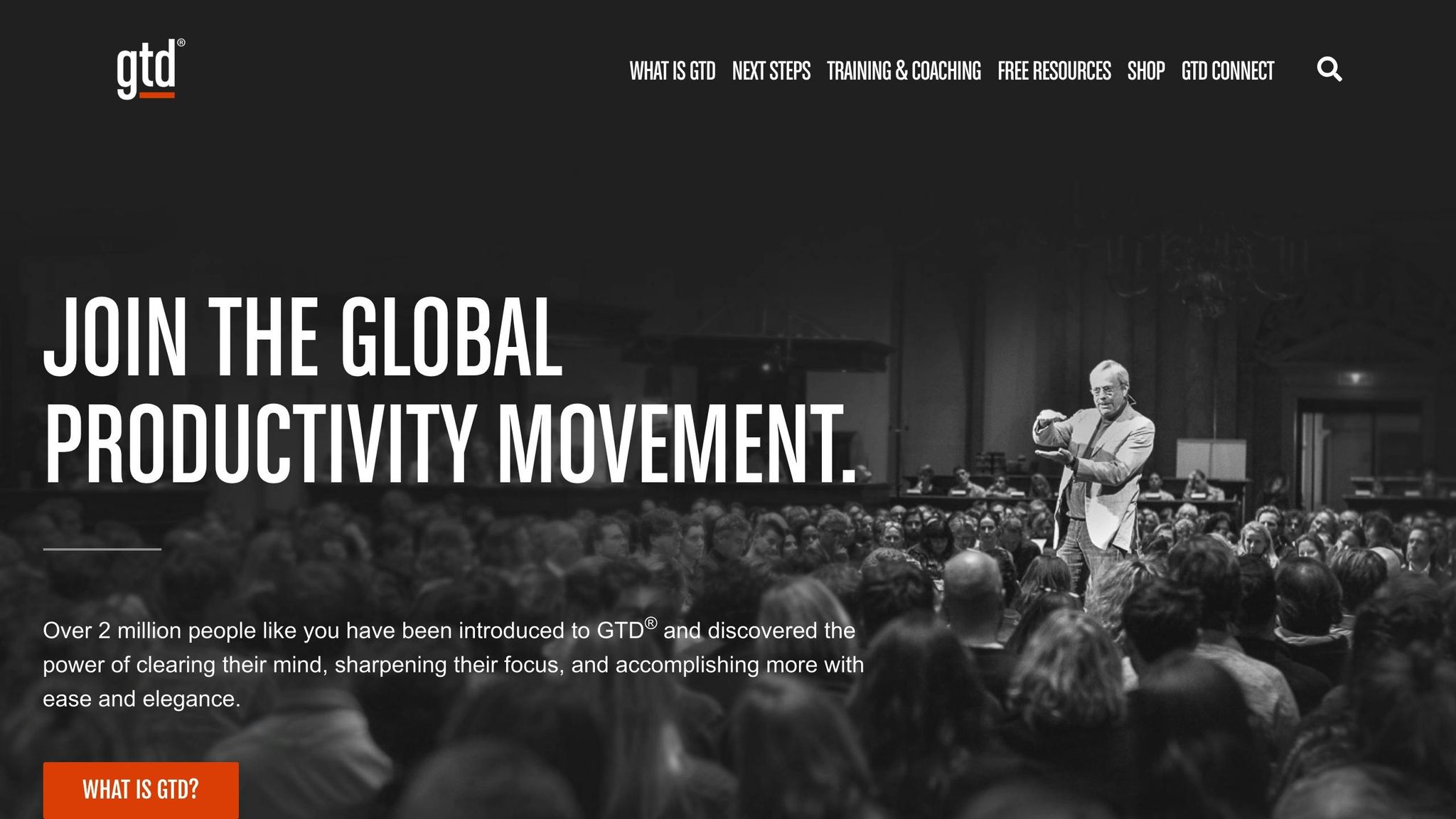
David Allen's Getting Things Done (GTD) provides a practical system to help students manage tasks while keeping stress in check. The main idea? Offload tasks from your mind into a trusted system so you can focus on what’s important. Let’s break down GTD’s key steps.
The Three Steps of GTD
-
Capture Everything
Write down every task, deadline, or responsibility that comes your way. Whether it’s a term paper, a group project meeting, or a simple reminder, recording it all in a reliable tool clears mental clutter. -
Clarify the Action
For every item on your list, decide the next actionable step. Swap vague entries like "Biology project" for specific steps such as "Research three sources on cell division" or "Email professor about lab requirements." -
Organize by Context
Sort tasks based on where or how they’ll be completed. Examples include:- @Library: Research papers, studying textbooks
- @Computer: Writing essays, submitting assignments
- @Phone: Scheduling study groups, calling advisors
- @Campus: Meeting professors, attending labs
GTD in Practice
Here’s how GTD compares to a more traditional approach:
| Traditional Approach | GTD Method |
|---|---|
| Keeping tasks in your head | Using a detailed task list |
| Vague goals like "Study chemistry" | Clear steps like "Complete practice problems 1-10" |
| Scrambling to meet deadlines | Regularly reviewing and planning tasks |
One simple but powerful GTD tip is the two-minute rule: if a task takes less than two minutes, do it immediately. This prevents small tasks from piling up and becoming overwhelming.
During busy periods like finals or midterms, GTD helps you stay organized and make the most of your time. To fully embrace this system, set up a weekly review where you:
- Check progress on ongoing projects
- Remove completed items from your list
- Plan and update tasks for the coming week
sbb-itb-1ae7b2a
6. The Productivity Project by Chris Bailey
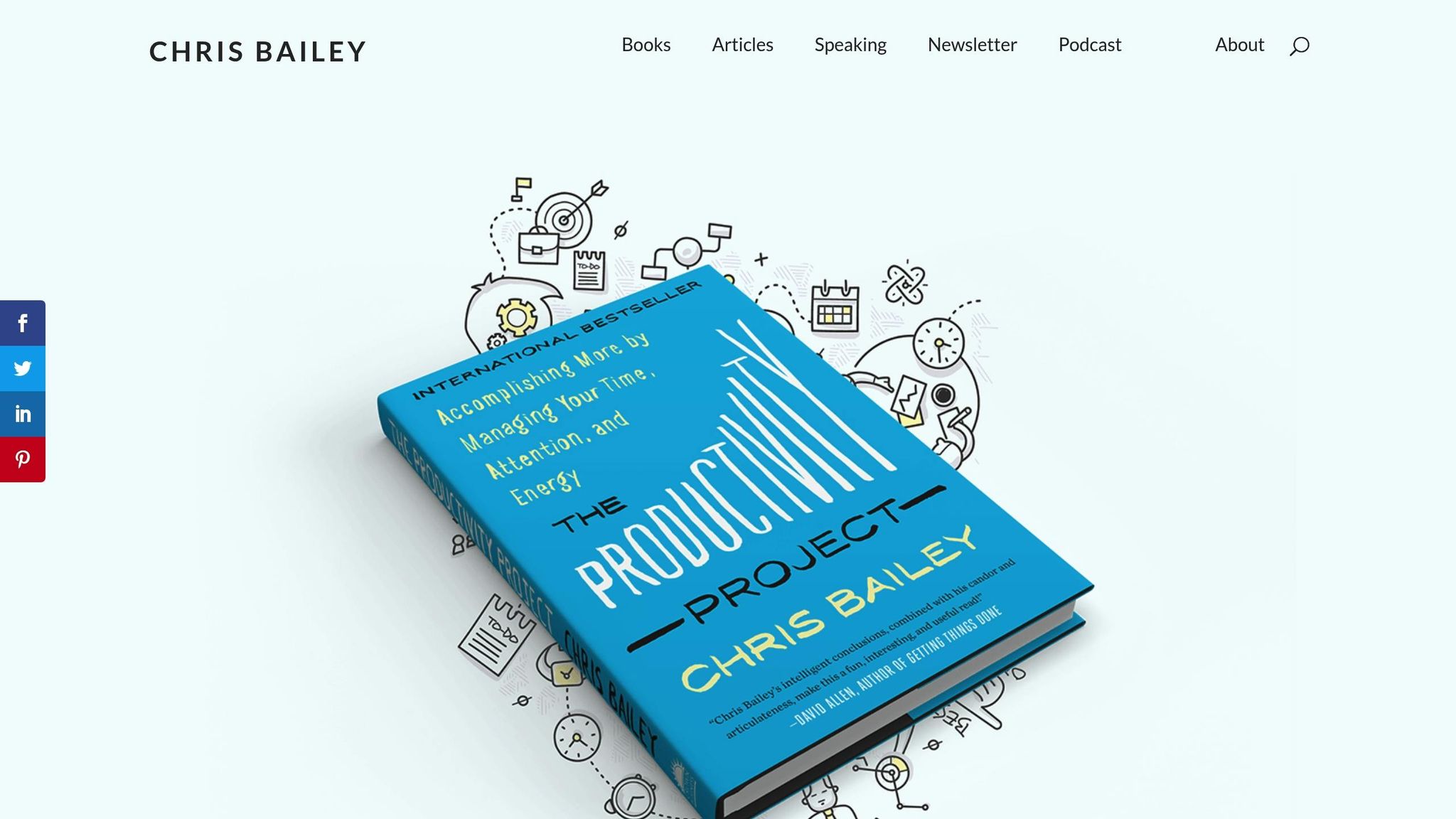
Chris Bailey's book offers practical advice based on his personal experiments, making it especially helpful for students managing classes, assignments, and extracurricular activities.
One of the key ideas in the book is that managing your energy can often be more effective than simply focusing on time management. By paying attention to your energy levels, you can plan demanding tasks when you're most alert and save less intensive work for when you're feeling tired.
Bailey also highlights the importance of focus and minimizing distractions. He suggests structured work sessions with short, deliberate breaks to maintain concentration and prevent burnout.
The book encourages students to adapt productivity strategies to their specific needs. For example, you can try:
- Tracking when you study most effectively throughout the day
- Testing different methods for taking notes
- Trying out various study locations to see what works best
- Adjusting the length of breaks to find a rhythm that helps you stay focused
These strategies encourage a personalized approach to productivity. By keeping an eye on your energy, staying focused, and experimenting with what works for you, you can create a system that fits your academic goals and challenges.
7. Essentialism: The Disciplined Pursuit of Less by Greg McKeown
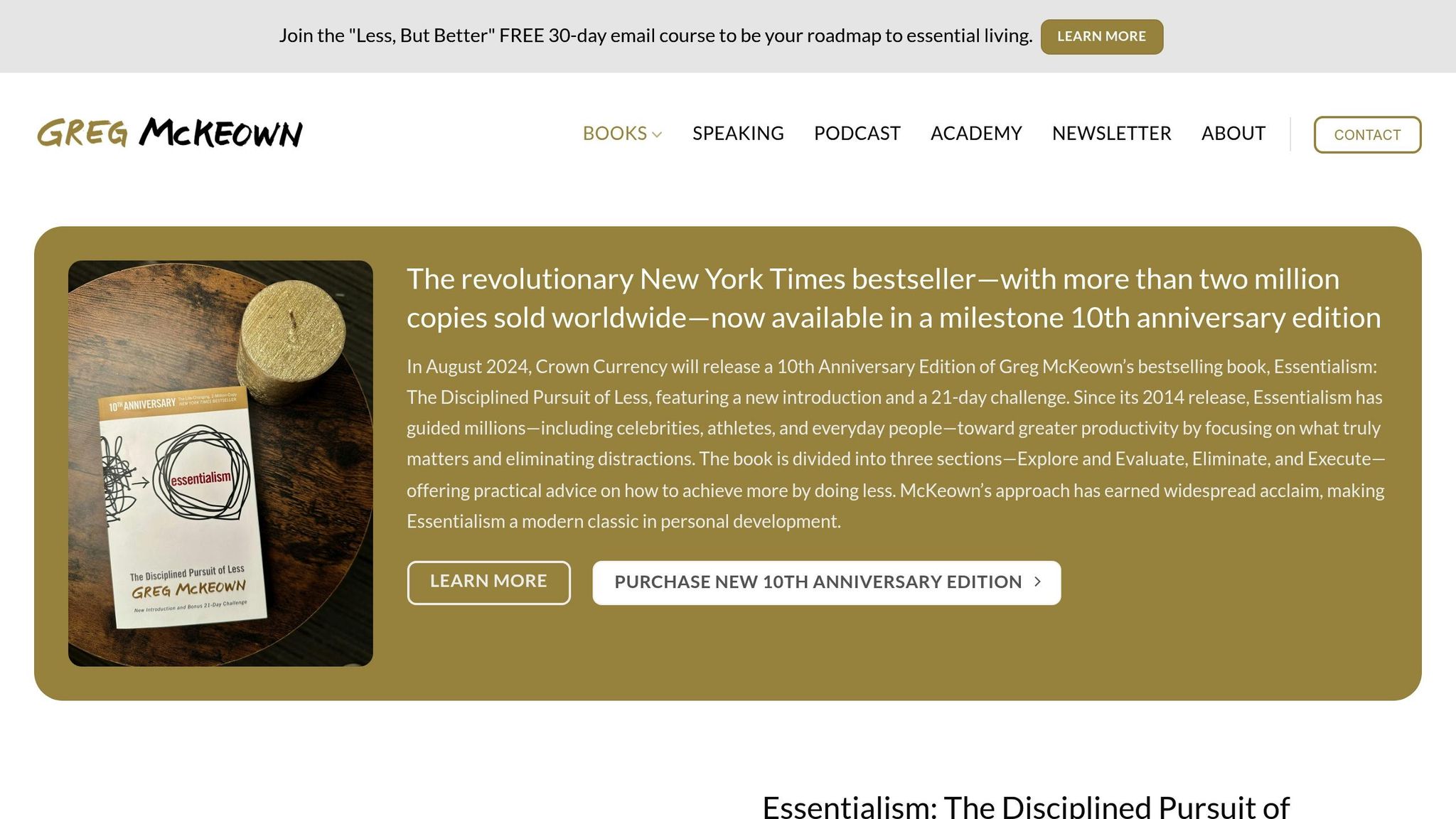
In today’s fast-moving academic world, students often feel buried under an avalanche of tasks and responsibilities. Greg McKeown’s Essentialism introduces a way to cut through the chaos by focusing on what truly matters most.
The idea is straightforward: do less, but do it better. Instead of trying to manage every assignment, extracurricular activity, and social event, McKeown suggests narrowing your focus to the tasks that align closely with your academic and career goals.
Here’s how students can apply this:
- Set clear priorities: Focus your energy on the courses and projects that directly impact your major or career path, rather than aiming for perfection in every subject.
- Cut out distractions: Remove activities that don’t contribute to your primary academic objectives.
- Learn to say "no": Protect your time by turning down commitments that don’t align with your top priorities.
To help decide what’s worth your time, the book provides a handy framework:
| Question | Purpose | Example Application |
|---|---|---|
| Is this essential? | Determine true importance | Core classes vs. optional workshops |
| What's the trade-off? | Understand what you sacrifice | Study time vs. club activities |
| Will this matter in a year? | Assess long-term impact | Research experience vs. social events |
McKeown points out that Essentialism isn’t about cramming more into your schedule. It’s about channeling your time and energy into the few things that truly matter. This mindset is especially helpful during stressful times like finals or when juggling multiple deadlines.
The book also encourages students to clarify both short-term academic priorities and long-term aspirations. By identifying what’s most important, you can make smarter choices about where to focus your efforts and what to let go of. These ideas tie seamlessly into the productivity strategies discussed later, giving you a clear path to put them into action.
Book Features at a Glance
Each book highlights specific strategies tailored for students. Use the table below to compare their main focus and who they're best suited for.
Quick Reference Table
| Book Title | Primary Focus | Best For | Key Takeaways |
|---|---|---|---|
| Atomic Habits | Building Habits | Students struggling with consistency | • Small daily improvements (1%) • Straightforward habit-building steps • Practical behavior change tips |
| Deep Work | Focus & Concentration | Students distracted by technology | • Methods to stay focused • Tips to eliminate distractions • Strategies for deep learning |
| The 7 Habits of Highly Effective People | Personal Growth | Students aiming for long-term skills | • Time management basics • Goal-setting techniques • Leadership skill-building |
| Make It Stick | Learning & Retention | Students aiming to remember more | • Research-backed study methods • Memory-boosting tips • Strategies for test prep |
| Getting Things Done | Task Management | Students feeling overwhelmed | • Systems to organize projects • Techniques for mental clarity • Ways to reduce stress |
| The Productivity Project | Experimentation | Students testing productivity methods | • A variety of productivity tips • Energy management ideas • Strategies for balancing work and life |
| Essentialism | Setting Priorities | Students juggling too much | • Tools to identify what matters • Decision-making strategies • Ways to manage time effectively |
Each book addresses a specific productivity challenge - whether it's forming habits (Atomic Habits), staying focused (Deep Work), or improving memory (Make It Stick).
• Struggling with consistency? Start with Atomic Habits
• Distracted by technology? Check out Deep Work
• Overwhelmed by tasks? Getting Things Done can help
• Want better retention? Dive into Make It Stick
These books offer practical tools and approaches that you can tailor to your academic needs and personal learning style.
How to Use These Methods
Incorporate these productivity methods into your academic routine with the following steps:
Start with a Productivity Audit
Take a close look at your current study habits. Identify your main challenges, such as procrastination, trouble focusing, or struggling to meet deadlines. This self-assessment will guide you in deciding which methods from the recommended books to try first.
Choose Your Focus Area
Based on your audit, target one specific area for improvement:
- Habit formation: Start with ideas from Atomic Habits.
- Concentration issues: Dive into Deep Work.
- Feeling overwhelmed: Explore Getting Things Done.
- Memory improvement: Use strategies from Make It Stick.
Implementation Strategy
1. Set Clear Benchmarks
Track your progress using measurable goals:
- Log focused study sessions (e.g., 30-90 minutes each).
- Count how often you get distracted daily.
- Track how quickly you finish assignments.
- Monitor your grades over time.
- Record how long it takes to complete tasks.
2. Plan Your Actions
Use this template to create specific plans:
"I will [action] at [time] in [location]."
Examples:
- "I will dedicate 9:00 AM to 11:00 AM for deep work in the library."
- "I will review my task list at 8:00 PM in my dorm room."
- "I will spend 30 minutes practicing active recall after class."
3. Start Simple and Build Gradually
Ease into the process with a step-by-step approach:
| Week | Action | Goal |
|---|---|---|
| 1-2 | Establish basic habits | Focus on one core routine. |
| 3-4 | Introduce time blocks | Schedule focused work periods. |
| 5-6 | Refine your system | Make adjustments as needed. |
| 7-8 | Combine techniques | Integrate multiple strategies. |
Regularly reviewing your progress will help you stay on track and make improvements.
Adjustment Protocol
If something isn’t working, try these adjustments:
- Go back to the basics and simplify your routine.
- Experiment with another method from a different book.
- Blend techniques that complement each other.
Integration Tips
Here are some ways to combine methods effectively:
- Pair the small habit-building steps from Atomic Habits with focused work sessions from Deep Work.
- Use the organizational tools from Getting Things Done alongside the priority-setting principles from Essentialism.
- Apply memory strategies from Make It Stick during your Deep Work sessions.
Modify these strategies to fit your routine and set yourself up for academic success.
Wrapping It Up
The strategies discussed above offer a clear guide to improving academic productivity. These seven books provide actionable methods to sharpen your study habits, manage your time better, and reduce stress - all essential for academic success.
Many students have found these techniques helpful for improving focus and minimizing distractions. By using these tools, you can develop stronger time management skills, build effective habits, and tackle stress more effectively.
Start small: pick one book that addresses your biggest challenge - whether it's procrastination, staying focused, or managing an overwhelming workload. Gradually, you can integrate strategies from the other books to create a system that works for you.
For additional resources, check out Best Business Books at businessbooklist.com.
FAQs
How can I choose the right productivity book to tackle my academic challenges?
To find the best productivity book for your academic needs, start by identifying your specific challenges. Are you struggling with time management, staying focused, or balancing schoolwork and personal life? Look for books that directly address these areas and offer actionable strategies you can apply.
Consider whether the book's tone and style resonate with you. Some books provide step-by-step guides, while others focus on mindset or habits. Pick one that aligns with your learning preferences and goals to ensure it’s both practical and motivating.
How can I use the habit-building techniques from Atomic Habits to improve my study routine?
To apply the habit-building strategies from Atomic Habits to your study routine, start by focusing on small, manageable changes. For example, set a specific time and place for studying each day to create consistency. Pair your study sessions with an existing habit, like sitting at your desk after breakfast, to make it easier to stick to.
Use the concept of "habit stacking" by linking your study habit to something you already do. For instance, after finishing a class, immediately review your notes for 10 minutes. Also, make studying more rewarding by celebrating small milestones, like completing a chapter or solving a tough problem.
Finally, design your environment to support your goals - keep your study materials organized and distractions, like your phone, out of reach. Small adjustments like these can help you build a sustainable and productive study routine over time.
How can the principles of 'Deep Work' and 'Essentialism' help students manage their academic workload more effectively?
'Deep Work' and 'Essentialism' offer complementary strategies for managing academic workloads by focusing on what truly matters and maximizing productivity.
The concept of Deep Work, introduced by Cal Newport, emphasizes dedicating uninterrupted, focused time to cognitively demanding tasks. This approach helps students achieve higher-quality work in less time by eliminating distractions and fostering concentration.
On the other hand, Essentialism, outlined by Greg McKeown, encourages prioritizing only the most important tasks and saying no to non-essential commitments. By identifying what truly aligns with their goals, students can avoid burnout and maintain balance in their academic and personal lives.
Together, these principles help students work smarter, not harder, by combining focus with intentionality to achieve meaningful results while reducing stress.

